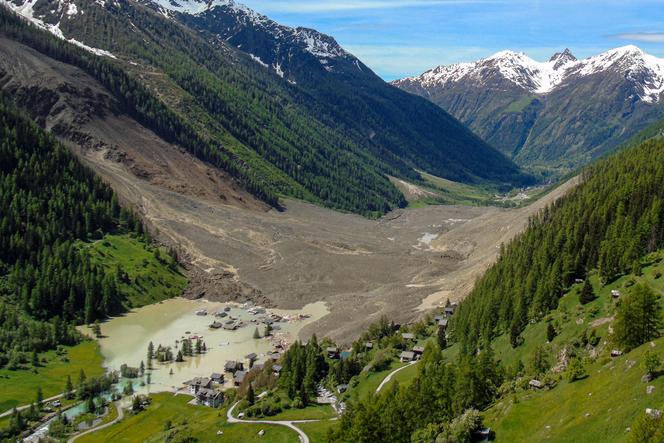


On the still-snowy peaks of the Swiss Alps, the first warm days signaled the start of the snowmelt season, with vibrant spring wildflowers and lush green pastures where cows frolicked . But the idyllic picture ended lower down. The valley floor had been replaced by a monstrous, brown mass: 10 million cubic meters of crushed ice, rock and mud compacted together. The sublime had turned to sinister in a single glance.
It all began in mid-May, when a peak called the Petit Nesthorn came under close watch after worrisome movements on its northern face triggered an initial alert. Debris began falling, piling up on the glacier just below, prompting the evacuation of residents and livestock − "as a pure precaution," according to local authorities − while waiting for the mountain to settle. "We will be able to return very soon," said Matthias Bellwald, the mayor of the 300-resident municipality. But "the unthinkable," as people now call it here, has ultimately shattered that easy confidence.
It took less than 40 seconds for the Birch Glacier, at 3:30 pm on Wednesday, May 28, to bring an end to the 592 years of existence of the village of Blatten, known as much for the geraniums in the windows of its centuries-old larch chalets as for its resistance to mass tourism. In the Swiss Alpine imagination, already rich with legends, this Lötschental valley (in the canton of Valais, southern Switzerland) occupied a special place − a sort of original, Edenic sanctuary. Now, it holds a far darker distinction: It is the first to surrender a village to the combined forces of geology and a rapidly warming planet.
You have 76.18% of this article left to read. The rest is for subscribers only.
